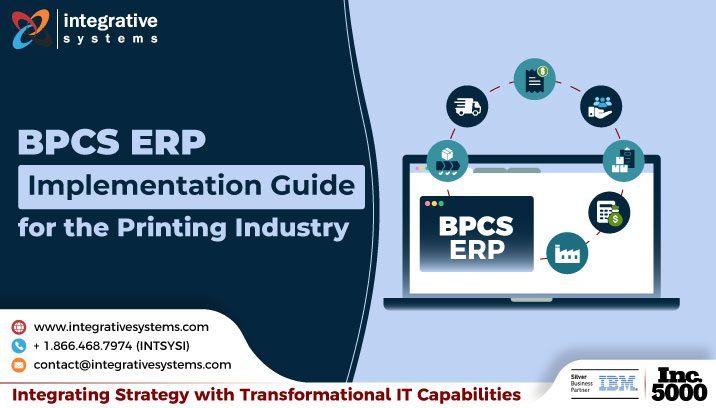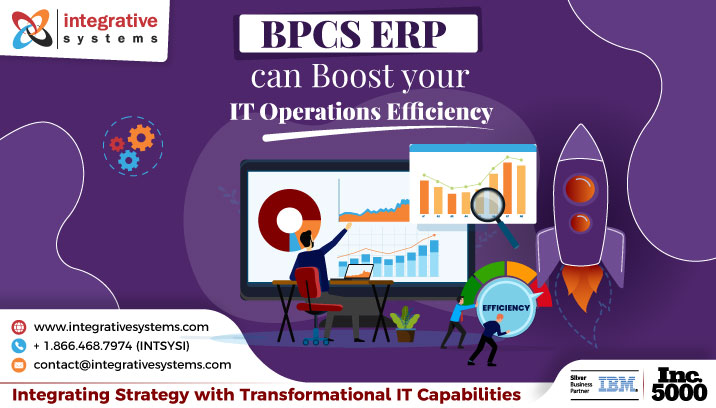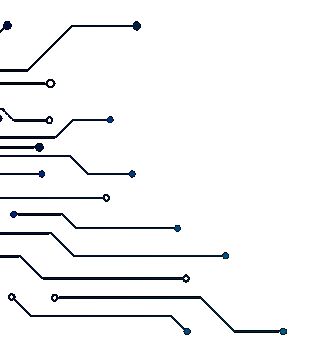How does Printing Industry work?
Print is one of the fastest-growing industries. Digitization has added much more power under the hood of print companies and has changed the outlook, completely.
This piece of content is an effort to get an overview of how a typical print industry operates, what are the different processes, departments, and challenges that the industry battles.
Let’s begin!
Stages of Printing
Printing Industry adheres to a clearly identified, three-stage process, that has matured over the years.
Pre-Press
As the name suggests, at this stage the team focuses primarily on getting the prerequisites ready. Preparation is of vital importance in the printing industry as the output completely relies on how well you prepare before you print.
Here are some common Pre-Press requisites:
- Get the design for the editorial or ad ready
- Chalk out the correct page layout and margins
- Get the printing film or plates ready as per the design
With these things at hand, now one can be confident to move up the ladder to print.
Press/Print
This is the core stage where preparations done in the Pre-Press stage are acted upon and output is provided to the Post-Press stage.
Here’s what goes around in the Press/Print Stage:
- Get the Press Ready
- Get the color cartridges ready as per the specifications
- With the permission to print, schedule the print order
Once the print job is ready, we are good to move to the next stage.
Post Print
This is the final yet crucial stage of printing. The Post-Print team does the finishing for the print job received and makes it ship-ready.
Here’s what happens in the Post-Print stage:
- As per the finishing specifications fold, trim, and bind the prints to match the finesse expected
- If the order is for memo books, books, or similar goods that demand to bind, perform the said binding procedures
- Prepare queues or stacks of the finished goods for shipping
- Make the arrangements for sales and distribution via the different channels
And, this is how a print job is completed for an order. Nothing but the slowly and steadily matured process keeps the integrity alive.
Departmental Structure of the Printing Industry
The printing industry is no different than the other streams of business when it comes to the departmental structure. The smooth business function with a concrete collaboration through all the departments we see today is the byproduct of experience.
To take a bird-eye view of the departmental structure of a printing company, there are primarily three departments that keep the wheel moving.
Sales & Marketing
We don’t think that a separate introduction is needed to express what this department does. Sales is the driving force for any business today and an active team is all you need to keep the rock moving.
Marketing is seeing infinite variations these days. From the times when billboards and Radio were the only mediums to market your services till today’s day and age of personalizing marketing for every segment of customers.
Manufacturing
Manufacturing is the core function of a printing company and is divided into two sub-divisions; production and distribution.
The production department is thoroughly responsible for executing the print jobs and queue management of the print jobs. The team works closely with the sales team, checks for new orders, and put them on the schedule for execution.
As per the order, the production team acts upon the prerequisites of the print job, prepares the press for the job, and executes the print. Post-Print, the print job is sent for finishing which involves folding and binding as per the specifications requested.
Once the production team flags a print job as ready, it moves up to the distribution team. The distribution team then arranges the job in stacks for packaging and shipping. As per the instructions received, the consignment is then shipped through the distribution channel.
Production and Distribution teams work hand-in-hand to accomplish print jobs in said time and help the printing company achieve the desired pace.
Finance & Accounting
The Finance & Accounting department doesn’t really need any separate introduction. It is solely responsible for liaising with money flow, inwards and outwards.
Finance & Accounting is further responsible for two major business functions; Accounts Receivable and Purchase. It’s two-way traffic and recording both is essential for a healthy accounting function.
Accounts Receivable has to work closely with Sales & Dispatch teams to track the orders received and completed. This ensures that the inward cash flow is tracked and maintained efficiently.
On the other hand, the purchasing department has to work closely with the production team. Purchase is the backbone of the manufacturing process and even the slightest negligence can cause interruptions and delays in production.
Paper is the highest consumed resource in the printing industry. Depending on the different varieties of papers, inks, cartridges, and other general supplies the purchasing team has to keep current.
Beyond the purchase operations, accounting for the outward cash flow is inevitable and crucial.
Managing the finances has never been an easy drill and will never be!
Besides the three departments at the core of a printing company, HR and Administration is another vital department that takes care of Human Resources and other administrative utilities.
Year-on-Year the competition has outgrown, and a lot of players have already got kicked off the race. The secret to competing in this cut-throat competition is simple if looked at carefully.
Here’s all you need to stay ahead in the game:
- Stay current with trends and adapt as quick as possible
- Upgrade and cut the clutter; whether it’s machinery or processes
- Automate the mundane and double-down the efforts on the functions that help you scale
- Introduce technology that helps reduce manual errors and increases productivity
There are certainly challenges and there are solutions too. All you have to do is be visionary and future-ready, with all that you can.
How is the printing industry evolving?
With ever-evolving customer expectations, the printing industry is approaching new highs and adapting to new enhancements rapidly.
Global Exposure
Back then, the printing industry was highly restricted to the locale where they produce their goods. The geographical barrier had a role to play and every print company that existed only had their pie of customers, and not more.
Digitization gripping its existence has propelled the exposure for printing companies.
There exist no geographical boundaries to hold you back from scaling your print business globally, as long as you differentiate your offerings.
Cloud Enablement
With the global outlook, came challenges like data security, accessibility, software, and third-party tool integrations. Cloud technology walked in as a savior and enabled print businesses to scale higher and across with the promise of security.
Niche Markets
Print is not limited to a single service where customers share the requirements and you print for them. Print is a versatile business where you have room for innovation and creative freedom.
The rising bar of customer expectations has paddled a revolution in the print industry. The print companies are unleashing bold moves and taking up niche printing assignments such as t-shirt printing and mug printing.
Niche markets are gripping and digitization is the driving force behind them.
Inventory and Materials Expansion With the ever-changing customer expectations, printing companies have not limited themselves to standard materials and inventories.
Experimentation and customization are going hand in hand and finding customer satisfaction in a personalized manner.
Printing companies today are experimenting with different types of inventories and materials; may it be paper, clothes, or ink. This has opened the door for new avenues and has certainly created a challenge for inventory and material supplies.
Print Manufacturing Technology
Digital print has brought a revolution in the printing industry.
With digital printing, print companies are adapting print technologies, bringing automation to their workflows, and experiencing double the accuracy.
Digital printing has opened the doors for process-level efficiency, faster order turnarounds, and increased profits.
What are the Challenges of the Printing Industry?
I am unable to reduce the redundant errors in my business
Managing a bunch of printing orders with ease is not an easy game. It takes experience, manpower, and a streamlined process to deliver on time.
Despite all of this, there are errors, redundant errors that delay the job and create negative repercussions on the reputation of the printing company.
Errors could be anything ranging from:
- Inaccuracy in the inventory of paper
- Errors in print jobs that can waste tons of paper
- Machine or System malfunction due to delay in the maintenance
- A dispute in the order distribution
We know that errors are everywhere; sometimes they are manual errors and sometimes they are infrastructural.
And, it gets even more challenging when these errors keep on popping up and you are unable to handle them with the ad-hoc process. It’s frustrating and makes you more and more angsty!
Don’t worry, there is a simple solution to it, technology!
Roping in a business planning and control system (BPCS) can help you hunt down recurring errors in one shot!
You got to do nothing but put your ad-hoc processes on the system that helps you manage things swiftly and cuts down on the errors that you were carrying through with the manual execution.
My Inventory Management is a total mess!
Inventory Management is of prime importance for a manufacturing business. As a printing company, the slightest error at the inventory front can cost you all your reputation.

Imagine a scenario, you are printing order for an event. Printing for an event demands clear time constraints as it won’t be helpful if you can’t fulfill the order in said time.
You confirm the order, toss a commitment for the delivery, and process it further to production.
The production confirms that you have all the raw materials required to complete the order, referring to the stocks.
It’s all good so far. The production takes up the order as per the queue and starts working on it. After completing half of the work, the team realizes that the ink required for the job is not sufficient.
How did this happen? Because the production team had confirmed the stocks before queueing the order up.
Later, you find out that the bookkeeper was on a leave for a couple of days and the entries were pending.
Now whom to blame for the loss?
The bookkeeper? The Production Team? Or the process that you follow?
This scenario is the most common and a reliable inventory management system is the way out to avoid these kinds of circumstances, where your reputation is at stake.
My business can’t do proper Customer Management
With the cut-throat competition in the market today, it’s of vital importance to manage and serve your customers better, than your competitors. If you fail to do so, your customers have options and a chance to buy from them, but you will lose a customer, forever.
In the printing industry, companies compete over quality and service.
Customers today are more inclined toward how they are treated, even more than the quality of the product/service they invest in.
If you have a lousy customer management system, full of loopholes, how much do you think are the chances of your customers sticking to you?
If your customers have to bother every time and follow up on your team to seek the status of their order, how long do you think they will entertain this?
It’s big time you should have a business planning and control system in place that helps your team with customer management. Right from the order status to the last customer communication, the system should record the thinnest of the details.
Only a reliable technology to back your customer management effort can help you keep competitive, today.
My business is unable to rollout invoices in time
A business runs smoothly when the inward and outward cash flow is in sync. Imagine what would happen if you were burning all the finances to sponsor customers’ projects who are going to pay you after ages?
You are going to be in minus!
Raising an invoice in time can save your day.
It’s a simple move, what’s stopping you from that?
If we are not wrong, it’s the system.
It’s a printing company and not a one-man show where everything is taken care of by a single person. There are departments, there are teams and a lot of on-the-fly communication ultimately delays the invoicing.
Imagine, if the production team is working on a printing job and completes it.
The accounts department, that is responsible to raise an invoice isn’t notified of the completion.
How do you think will the invoices be raised in time?
To break this void of communication, there has to be a system in place that notifies the accounts department about the jobs accomplished. So that, the invoices will be sent across on time, without any delay.
Tech-enablement will not only speed up your workflow but also push the inward cash flow, considerably.
I am uncertain about the finances and accounting
Cash flow in the back-end is the driving force for a business that runs smoothly. Finance & Accounting is the unsung function that contributes the most but least attributed while celebrating success.
Can’t agree anymore?
Have you ever imagined how would a business function with impromptu accounting?
Not less than a disaster, right?
To put that in a scenario, imagine, there is a sole person who is responsible for all the finance and accounting-related needs of your printing company.
One fine day, this person decides to take a vacation for 15 days.
Now, you don’t have a core alternative to get the job done, but a trainee accountant who joined a couple of months ago.
Would you be confident enough about the trainee to handle all the load that an experienced executive is handling for you?
Not a chance, right?
There are invoicing and purchasing; two major functions that demand accuracy and diplomacy. The novice might get overwhelmed, and you will end up in a mess.
It is better to have a technology like the BPCS system to rely on for such situations. Yes, human intervention can’t be bypassed completely, but what gets streamlined is the process and handover.
If the sole person is not available for some reason, the least that can be done is a short briefing on the day-to-day functions. This will not make the trainee a pro in a day, but for sure will not end you up in a mess and the job will be done.
My business has no provision for After Sales Service & Support
89% of consumers are more likely to make another purchase after a positive customer service experience – Salesforce Research.
The printing industry relies greatly on repeat business from its existing customers. And, today’s customers are not only concerned about the quality of product/service but also the post-sales service & support.
As a printing company, one has a diversified clientele; one-time buyers, the ones who buy quarterly, the ones who buy yearly, and the ones who come up with different requirements every time. And, as a business, you try and cater to them with the best service that you can, without any bias.
But, here’s a drill. The post-sale service or support cannot have the same approach for all of them.

Imaging this scenario:
1st Type – You have a customer who comes to you every quarter.
2nd Type – And, there is another customer who comes to you regularly, spontaneously, at any time around the year.
For the first type of customer, you have a window to follow up and check if the print job has been done right or if there is something that you can do for them. It’s quite easy to track and maintain the follow-up and service records for these kind of customers.
For the second type of customer, you need to be on your toes. There are two reasons to do so; first – they bring a lot of business to you and expect the same support for all the jobs, and you can’t mess with the orders that you are following up for.
The post-sales and support function ensures that your customers are treated well, and they will consider buying your services again. A clear track record of orders that one customer has processed with you gives you an idea of what business can you expect of them in the coming time.
To achieve clarity on this front, a business planning and control system can be a good investment to rely on. It shall help you fetch the records and maintain a healthy post-sale relationship with your customers.
The bottom line is – A happy customer means repeat business.
I am unable to get clearer insights into my business
By the year 2022, 9 out of 10 companies (90%) will list information as a critical enterprise asset and analytics as an essential competency in their corporate strategies – Gartner.
It’s big time to initiate the Data Initiative as a printing company.
Data is the real asset and is an ultimate super-power that can help you earn that market share that you have been pushing for, through the years.
Here’s what you can achieve with clearer data insights:
- Understand your customers better and tweak your business strategies.
- Find out the services that are driving more revenue and scale the stream up.
- Find out critical business problems and resolve them.
- Find out the business processes that are holding you back and change them for the better.
- Optimize the mundane and bring automation
- Make well-informed, strategic business decisions backed by data.
Data enables you with the capacity to unlock the hidden potential and loopholes of your business so that you can fix them up at the earliest.
If this appeals to you and you want to transform your business outlook with data, go that extra mile, and shoot for the stars. Get a BPCS ERP for your printing company which will not only help you automate your business process but also helps you with meaningful data insights.
What is our Approach for Implementation & Maintenance?
When you make up your mind to invest in a BPCS ERP, the very first step is to find the right partner who can implement it for you.
Integrative can help you with BPCS consulting and BPCS implementation services. Integrative follows a simple and sturdy approach for BPCS implementation.
Let’s understand the Integrative Approach
Initiation Phase
In the initiation phase, BPCS consultants from Integrative endeavor to understand the basics of the business processes that your business follows, day-in-day-out.
It gives us a leeway to establish a clear understanding of how your business works, which are the critical business processes, where to optimize, where to automate, and so on.
This exercise helps our BPCS consultants to create a high-level strategic plan for the BPCS implementation. It’s about outlining the scope of the work and project planning.
What you can expect from us in this phase is as follows:
- A high-level strategic plan for the BPCS implementation
- A raw outline of the scope of work
- A team template defining the roles and responsibilities of the team
- Clear Goals and Objectives for the Team members
- A modular phase-level plan for the project
- Communication Channels and Recurring Meeting Plan to track the progress
- Risk & Contingencies Management Plan
When both parties are on the same page and aligned to the above-mentioned pointers, it calls the kick-start meeting and project launches.
Functional Design Phase
With the functional design phase, our team of BPCS consultants moves a step forward into the details of your business processes. They analyze the processes and critical problems reported by you, besides the functional requirements that you specify.
This helps our consultants to paint a picture of an ideal process model that can serve the purpose. We refer to it as Process Modeling. This is done to give you a granular outlook of the functionalities we are going to build.
Simultaneously, the team of BPCS experts focuses on hand-picking the right talent to work on your project. Considering the complexity, the team assesses the skill levels and considers the highest qualified fit to work on your project.
And this doesn’t end here. Once we have the project team sorted, the BPCS consultant shares with them the identified process gaps and requirement specifications. Train them for the project and assess them for the learnings.
To give you a crystalized review of what happens in this phase:
- Identify the function of current processes.
- Identify the critical loopholes and gaps in the processes.
- Understand the functional requirements specified by the customer.
- Share a Process Model for verification.
- Form a Project Team and train them for the project.
- Assess the project team for the process model understanding.
By the end of this phase, we get to have a clearly defined functional process model to build upon, and a core project team.
Build Phase
In the build phase, we start connecting the dots and build as per the technical specifications recorded.
You get to witness your project shaping up!
The BPCS consultants ensure that the technical specifications are well-documented and approved from your end. This gives us the confidence that we are heading in the right direction.
Further, the technical specifications are fine-tuned to module-level specifications and distributed across the project team to develop.
With full-functioning coding efforts, the testing team ensures unit level, integration level as well as functional level correctness and completeness of the code.

Our BPCS experts keep you informed about the progression of the project and share with you the quality review reports. We ensure that you are well aware of the progress and are confident that your BPCS ERP is shaping up well.
To ensure the performance capabilities of the project, the team uses the pilot approach where the first version of the completed project is tested in a simulated production environment.
In technical terms, it is called usability testing which is carried out to assess the performance of the finished code.
Once the code is stable, performs, and functions to the set expectations, the team makes the build ready, which will be deployed to the production environment in the next phase.
Deployment Phase
It’s time to Go Live!
In the deployment phase the team of BPCS experts focuses primarily on the following objectives:
- Make the software solution ready with the final changes and inputs received during the User Acceptance Testing.
- Validate the hardware configurations and infrastructure arrangements before deploying the solution.
- Plan and execute training for the end users for the newly designed solution.
- Perform System testing on the production, note the deviations, and course correct wherever needed.
- Plan for a swift Data Migration to the newly developed solution, and execute it.
- The software solution is deployed to be used for daily operations.
The user acceptance testing performed under the simulated environment gives a better picture of the performance. The team then works on the final changes and inputs received at this stage.
Now, as we are done assessing the solution at the development end, it’s time to test the soil. It’s called Beta Testing in the production(client) environment. This helps us assess the system performance in a real-time environment.
The project team works closely with the concerned personnel at the client end to validate the hardware configurations and infrastructure setup. Even the thinnest error can be fatal and may lead to a misjudgement about the performance. The team makes sure that the environment is all set.
Simultaneously, it’s of vital importance to educate the end users about the newly designed solution and process functions. Our BPCS consultants make sure that they share all the required documentation with the end users, which can put them at ease while using the new system. The end users are trained well and assessed adequately before they start using the BPCS ERP in their daily operations.
Right before the BPCS solution is rolled out to live, it’s time for a final round of testing to validate the functionality and performance in the production environment. Our testing team performs the system testing, validates if there are any performance of functional gaps, and does the final fixes.
The most crucial part of building a business planning and control system from scratch is the integration of existing data or migration of data from existing data sources to the new system. Our team of BPCS experts does it with utmost care and makes sure that data is handled well.
Finally, after validating the system performance and functionalities, and successful completion of data migration, the BPCS ERP solution is rolled out to production for daily operations.
Optimization Phase
In the optimization phase, our BPCS consultants keep a close watch on how the system responds to daily operations and monitor the performance. This assessment ensures that the system serves the expected business needs with minimal friction.
If any issues are observed, then the team focuses on fixing them by tracing the roots. Additional requirements are analyzed and the required changes are made to cope with the business needs.
Simultaneously, our experts ensure that the end users have developed a clear knowledge of how the system works. If there is still any assistance required, it is provided through this phase.
In the end, the BPCS consultants perform a complete system audit to ensure the performance and usability of the solutions developed. End users and stakeholders are interviewed to identify the potential gaps and room for further improvement.
Integrative has always prioritized its customers’ success and prefers to go the extra mile for customer satisfaction. On successful delivery of the solution aligned to the defined scope of the project, the project enters the maintenance phase.
Our BPCS experts keep in touch with you for further upgrades besides consistent 365 x 24 x 7 active support to put you in sync with the newly developed BPCS ERP solution.
Frequently Asked Questions
What is the right time to Upgrade an ERP?
If the current system is giving you hard time in daily operations and your business decisions aren’t backed by real-time insights, it’s big time you should get an upgrade. Today, in this cut-throat competition, if your system doesn’t offer you insights, you are shooting in the dark.
Here are a few common alarming signs that signal an upgrade:
- Business decisions are taking longer as you are not having access to the potential business insights.
- Increasing customer complaints due to poor customer service and order management.
- Finances are overwhelmed and a consistent void in the inward cash flow.
- Relying on a bunch of human heads and a couple of third-party applications for inventory and supply chain management.
- The consistent system failures and degraded performance with the increasing number of users.
- Your competitors are growing but you are unable to scale your business due to system inefficiencies.
What are the benefits of Cloud-based ERP?
Cloud-based ERP brings in a bunch of benefits such as; easy scalability for features and storage, flexibility in data sharing, a considerable amount of cost savings, and operational efficiencies in terms of speed. Besides all the other benefits, the security of the data is one of the most-opted reasons for considering a cloud-based ERP over an on-premise ERP.
Can Integrative help us identify the system-specific business requirements?
With over 20+ years of experience in the software development industry, Integrative has built a great number of BPCS ERP solutions for varied business domains. We have a specialized team of BPCS consultants who work dedicatedly for projects across the globe.
Considering the printing industry, we have experts who have worked on similar projects and know the business in and out.
Irrespective of the experience and domain, it’s our approach that separates us from others. Our experts spend a considerable amount of time with the stakeholders to understand the business process, locate the operational gaps, and draft system specifications.
How do we measure the ROI for BPCS ERP implementation?
Integrative helps you devise ROI into varied KPIs that indicate growth. Our BPCS consultants help you identify the operational gaps and opportunities for process optimization. Based on that, we map KPIs for each aspect that adds up to business growth and efficiency.
Depending on the set parameters, ROI can be carried out in terms of total saved man-hours with the automation applied, reduced operational risks, optimized processes, and increased productivity.
How much time does BPCS ERP implementation take?
It completely depends on the complexity of the project and the number of modules to be developed. BPCS ERP implementation can be tailored to your specific requirements and that’s the best part of it.
Our BPCS experts understand your requirements completely, transform them into technical specifications, and present you with a tentative scope of work with the respective timeline for completion.
A frictionless communication and transparent reviewing system ensure the timely completion of the project.
Is it possible to migrate the historical data to the new BPCS ERP?
Yes, it is possible. Integrative includes data migration strategy as a part of the implementation. BPCS consultants plan for data migration during the deployment phase and execute it with minimum friction and repercussions.
Does BPCS ERP support third-party integration?
Today, all the leading third-party solutions are built around flexible APIs, which can be integrated with your ERPs. Integrative specializes in building flexible solutions that are open to integrations and gel firmly with third-party solutions. Our experts will make sure that the third-party integrations are rolled out effortlessly.
Is BPCS ERP Scalable?
Integrative believes in creating value for its customers, always.
The BPCS solutions we build are proposed to be built on the cloud, which makes them scalable and flexible to any number of users. Our BPCS consultants encourage a futuristic approach while gathering the requirement specifications from you, and also perform extensive research on your market segment to gain a competitive edge.
This in turn helps us build solutions that are scalable.
BPCS ERP Post Implementation Support by Integrative
Integrative believes in bringing value to its customers’ business with the innovative solutions that it builds. With the ever-changing business outlook today, Integrative stands its ground when it comes to supporting and maintaining post-implementation, with the same dedication.
Here are a few scenarios that may cross your path and you will be backed by Integrative’s post-implementation support:

The market is getting competitive, and I am losing the market share!
We understand businesses are evolving at a rapid pace. The printing industry is seeing new highs with the ever-changing landscape of marketing function, post covid.
To keep your BPCS ERP competent Integrative’s BPCS consultants consistently keep in touch with you. It’s our prime job to stay current with the upcoming market trends as well as you so that we can think of possible customizations or additions to the system.
Together, we can identify the gaps and validate the acute changes to be made to the solution.
What if my BPCS ERP expert walks off?
We can’t control people, rather we can control the approach or processes that we follow. Integrative brings 20+ years of experience in the BPCS domain and has nurtured quality talent to work for its client.
If there comes a time when a BPCS consultant who is working with you decides to leave, you will not have anything to worry about. Integrative firmly functions on its approach and always keeps a backup resource ready to be deployed.
I am losing my reputation to ever-changing customer demands!
We understand how important relations are in business. For an industry like a printing company, repeat business is more business. And, to make your customers stick to you, we have to cope with the changing customer needs.
The supply chain has a role to play to serve better to the changing demands. We are on our toes to help you out and make the necessary changes to make things fall in place.
Vendor management and customer management are the two major functions that demand overhaul continually according to the changing behaviors. With the help of acquired data points, we help you revamp the affected processes, to make the system more efficient.
I am fed up with the human errors by my BPCS ERP users!
Integrative’s BPCS consultants ensure that your in-house team is well-trained and assessed before they start using the newly designed solution.
Beginning hiccups are a part of the journey, but if the human errors persist, our experts will always be proactive about it and conduct the required training, periodically.
If any functional deviation is observed in the system, it will be reported back to the project team and will be resolved on priority.
Closing Notes
BPCS ERP is a great deal to have and with this cut-throat competition and rising customer expectations, printing companies must consider investing in one to get above the edge.
Integrative Systems have been a part of the digital transformation of a variety of businesses, across the globe. With a power-packed team of 100+ certified software experts, Integrative is on a mission to deliver best-in-class IT solutions.
If you are looking for BPCS consultants and a team of experts to work on your ERP solution, drop us a line at [email protected], and our experts shall get back to you in the next 48 hours.









